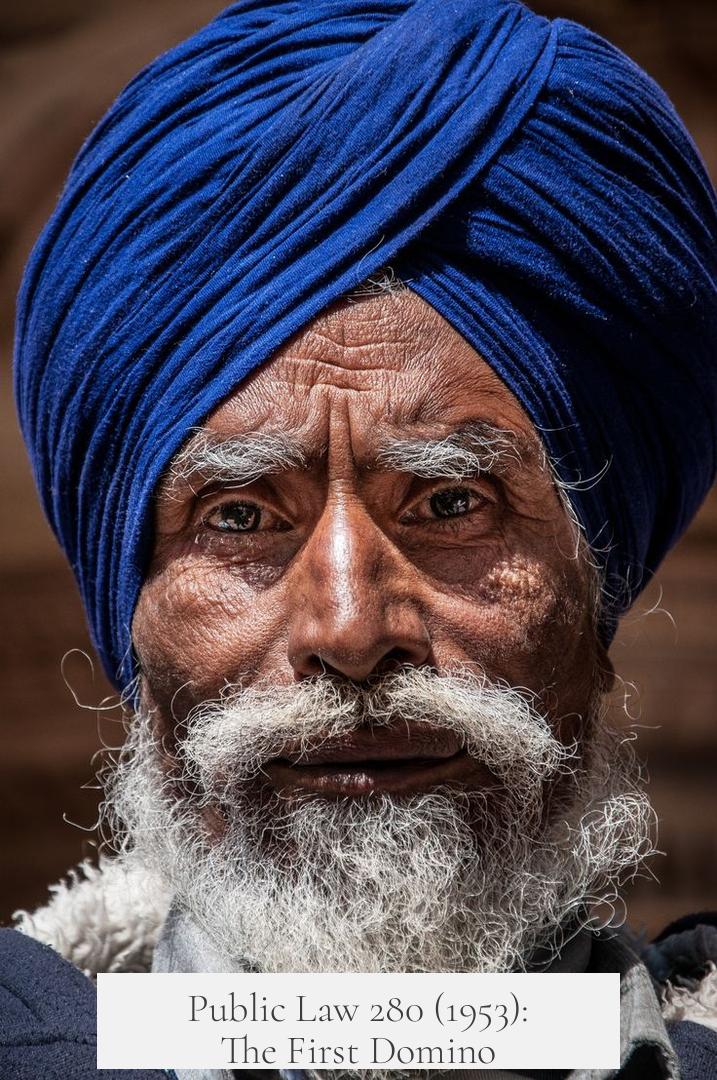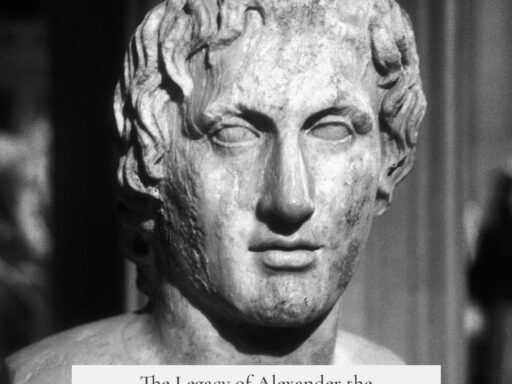The history of Indian casinos in the United States reflects a complex evolution of legal decisions and federal laws that shape tribal sovereignty and economic development through gaming. Key legal milestones from the mid-20th century onward establish how Indian tribes gained the rights to operate casinos on their lands with limited state interference.
Public Law 280, passed in 1953, initially allowed certain states to exercise restricted criminal jurisdiction on Indian reservations. The law’s scope focused on criminal law, not on broader regulatory controls like taxation or gaming oversight. This narrow jurisdiction laid the groundwork for later legal challenges by tribes regarding state authority over their lands.
A landmark case, Bryan v. Itasca County (1976), directly confronted this issue. Russell Bryan, an enrolled member of the White Earth Band, was taxed by the state on his mobile home situated on reservation land. The Supreme Court ruled that Public Law 280 did not empower states to impose taxes or other regulatory measures on Indian lands beyond criminal law enforcement. This decision significantly limited states’ jurisdictional reach and protected tribal sovereignty, especially regarding economic activities.
Over a decade later, California v. Cabazon Band of Indians (1987) further defined tribal gaming rights. The Cabazon Band operated high-stakes bingo and card games on their reservation, which California sought to prohibit. The Supreme Court emphasized that because gambling was legal but regulated within California, tribal gaming could not be outlawed under Public Law 280. The Court noted how these gaming operations provided crucial income and employment to tribal members. However, dissenting opinions questioned whether profitability justified the operation of such commercial activities.
Building upon these rulings, Congress enacted the Indian Gaming Regulatory Act (IGRA) in 1988. IGRA created a federal framework that recognized tribes’ exclusive right to regulate gaming on their lands if the gaming activity is neither prohibited by federal law nor by state criminal law and public policy. Tribes must negotiate gaming compacts with states for Class III gaming, covering casino-style games. IGRA balanced tribal self-governance with a need for regulatory oversight and state involvement, fostering a structured environment for tribal gaming operations.
Before these developments, gambling was largely restricted to Nevada, with most states enforcing prohibitions or heavy regulations on gaming activities. Federal laws like the Johnson Act of 1951 and the Corporate Gaming Act of 1967 sought to minimize gambling-related crime by tightly restricting device use and corporate casino ownership. The expansion of legal gambling beyond Nevada began in 1976 with New Jersey legalizing gambling in Atlantic City, thereby broadening national acceptance of regulated gaming.
Following IGRA, Indian gaming experienced rapid growth. Tribal casinos thrived due to limited competition and cooperative regulatory frameworks. However, conflicts arose, such as the 1992 FBI raid targeting slot machines at Arizona tribal casinos. The Fort McDowell Yavapai Nation resisted using physical blockades, leading to state negotiations and acceptance of state regulation consistent with IGRA’s provisions.
The financial success of tribal casinos varies. Facilities like Foxwoods in Connecticut prosper thanks to a dense local population and less competition, whereas many Oklahoma casinos operate with modest profits due to saturation. These disparities indicate that tribal gaming outcomes depend heavily on geographic and economic contexts.
Some states reacted by authorizing non-tribal gambling to avoid losing potential revenue. South Dakota permitted limited gambling in Deadwood in 1989. Riverboat casinos emerged as another non-tribal option, operating on rivers bordering states. These ventures face risks from events like Hurricane Katrina, which destroyed many Gulf Coast riverboats in 2005.
| Legal Milestone | Year | Impact |
|---|---|---|
| Public Law 280 | 1953 | Granted states limited criminal jurisdiction on Indian lands |
| Bryan v. Itasca County | 1976 | Restricted state taxation and regulation on Indian reservations |
| California v. Cabazon Band | 1987 | Affirmed tribal right to operate regulated gaming on reservations |
| Indian Gaming Regulatory Act (IGRA) | 1988 | Created federal framework for tribal gaming regulation and compacts |
- Indian casinos emerged from federal and legal shifts limiting state control over reservations.
- Supreme Court cases progressively affirmed tribal sovereignty over economic activities like gaming.
- IGRA established a regulatory framework balancing tribal rights with state involvement.
- Tribal casino success depends on location, market demand, and negotiated state compacts.
- Non-tribal gambling expanded alongside tribal operations in some states.
What Is the History of Indian Casinos?

The history of Indian casinos is a tale of legal battles, sovereignty, and economic survival. It involves landmark court cases, federal laws, and a transformation from strict prohibition to a booming industry empowering Native American tribes across the United States.
Let’s dive into this fascinating journey and see how Indian casinos carved their space in American history.
Setting the Stage: Early Legal Framework
Before Indian casinos became a household topic, gambling in America was a tightly controlled and often illegal practice. Nevada dominated the casino scene. Other states cracked down on bingo halls, slot machines, and any gambling that smelled suspiciously like organized crime.
Two federal laws framed gambling’s limits before Indian gaming entered the picture:
- 1951 Johnson Act: This law banned gambling machines unless explicitly legal in a state.
- 1967 Corporate Gaming Act: Allowed corporations to own casinos but under strict SEC oversight.
In 1976, New Jersey broke Nevada’s monopoly by legalizing gambling in Atlantic City, signaling a slight loosening of restraints, but most states remained poker-faced on gambling expansion.
Public Law 280 (1953): The First Domino

The groundwork for all future Indian gaming cases comes down to Public Law 280, passed in 1953. States gained limited criminal jurisdiction over Indian lands, but the scope was sharply debated. This law stated:
“This law stated that state criminal law applied to Indian lands.”
But did this mean states could tax or regulate all activities on reservations? Not quite.
Bryan v. Itasca County (1976): Borders and Boundaries Clarified
Meet Russell Bryan of the White Earth Band of Ojibwe. In 1970, he faced a $147.95 tax on his mobile home, situated on reservation land. The state and county courts said, “Pay up,” relying on Public Law 280.
But if Public Law 280 were a popular movie, the Supreme Court would call out the director for creative liberties.
“The court decided… that the language and intent of Public Law 280 was narrower than its interpretation by the county and state courts… and granted the state no other regulatory powers (such as taxation).”
This 1976 ruling sharply limited state powers over Indian lands, marking a critical win for tribal sovereignty. States couldn’t just tax or regulate tribal property under the guise of Public Law 280.
California v. Cabazon Band of Indians (1987): The Gambling Fairway Opened

Fast-forward to California, 1987, where the Cabazon Band ran high-stakes bingo and card games on their reservation. California’s reaction? Let’s shut that down!
The state argued that gambling, though legal but heavily regulated in California, should be regulated on the reservation too. The Supreme Court disagreed.
“Gambling was not a crime in California – it was a non-criminal activity that was regulated by the state… Public Law 280 did not grant state the power to regulate legal activities on Indian lands.”
More than just a clarification, this decision recognized that gambling was a serious economic lifeline:
“The games are a major source of employment for tribal members, and the profits are the Tribes’ sole source of income.”
The dissenters raised a valid eyebrow:
“[Accepting this reasoning] would require exemptions for cockfighting, tattoo parlors, nude dancing, houses of prostitution, and other illegal but profitable enterprises.”
Fortunately, the ruling didn’t mean anything goes. It carved out a legal space for tribes to operate gaming activities that were legal under state law, but stopped short of sanctioning all profitable businesses.
Indian Gaming Regulatory Act (IGRA) 1988: The Rulebook Arrives
The Supreme Court’s decision created a boom but also confusion. Congress stepped in with the Indian Gaming Regulatory Act (IGRA) in 1988.
This law gave tribes the right to regulate gaming on their lands if the activity is legal in the state. Federal law didn’t limit tribal rights. But for higher-stake games (Class III gaming), tribes must negotiate compacts with states.
“Indian tribes have the exclusive right to regulate gaming activity on Indian lands if the gaming activity is not specifically prohibited by Federal law and is conducted within a State which does not… prohibit such gaming activity.”
This framework balanced tribal sovereignty, state interests, and federal oversight.
Conflicts and Growth After IGRA

With new laws in place, Indian gaming took off but wasn’t without drama.
Some tribes embraced slot machines and card rooms, but others faced law enforcement crackdowns. In 1992, FBI raids targeted five tribal casinos in Arizona to seize slot machines.
The Fort McDowell Yavapai Nation pushed back hard — blocking the FBI with heavy machinery and triggering negotiations with Governor Fife Symington.
“The Yavapai retaliated by using heavy machinery to block the FBI… forcing a showdown that brought Arizona Governor Fife Symington in to negotiate.”
The upshot? Tribes agreed to some state regulation over slot machines, aligning with IGRA’s provisions.
From Profits to Pitfalls: Diverse Indian Gaming Realities
Not all Indian casinos are gold mines.
Consider Foxwoods in Connecticut. It thrives in a populous state with little competition, generating millions.
Contrast that with Oklahoma, home to about 200 casinos, many earning modest profits or struggling. Competition, location, and regulatory landscapes determine success.
“Tribally-owned casinos… were lucrative when isolated… [but] many… do not bring in the kind of huge profits you’d think…”
States Play Catch-up: Gambling Beyond Tribal Lands

Seeing the revenue potential, some states chose to legalize other forms of gambling to keep the money flowing locally.
South Dakota allowed limited gambling in Deadwood starting in 1989. Riverboat casinos appeared in border states, betting on the legal loophole that their floating nature bypassed some restrictions.
However, Mother Nature isn’t always kind: Hurricane Katrina severely damaged riverboat casinos along the Gulf Coast in 2005.
“Some states, not wanting to lose out on possible revenue, allowed non-tribal casino gambling…”
Quick Recap: Legal Milestones That Shaped Indian Casinos
| Year | Legal Event | Impact |
|---|---|---|
| 1953 | Public Law 280 | Limited state jurisdiction mainly to criminal law on Indian lands. |
| 1976 | Bryan v. Itasca County | Restricted state taxation and regulation of Indian land activities. |
| 1987 | California v. Cabazon | Confirmed tribal right to conduct gaming if allowed and regulated by the state. |
| 1988 | Indian Gaming Regulatory Act | Established regulatory framework and tribal-state negotiation for gaming compacts. |
Each milestone built upon the last, creating both opportunities and challenges for tribes across America.
Curious Yet? Some Thought-Provoking Questions
- How might tribes balance economic growth with cultural preservation when gaming brings in outsiders?
- Could increased competition between tribal and state casinos affect tribal revenues long term?
- What role should the federal government play in resolving disputes over sovereignty and regulation?
These questions show the story of Indian casinos isn’t just about gambling. It’s about sovereignty, law, economics, and identity intertwined.
Final Thoughts
The history of Indian casinos is rich and complex. From limited state jurisdiction under Public Law 280 to the establishment of a comprehensive federal framework via IGRA, the journey is remarkable. It highlights the resilience of Native American tribes determined to secure economic independence while navigating legal storms.
Indian casinos are more than just gambling halls—they represent sovereignty, self-determination, and a vital economic lifeline. Understanding the historical context helps us appreciate the delicate balance of law, culture, and commerce that underpins this uniquely American institution.
So next time you hear about Indian casinos, remember: you’re witnessing a legacy of legal battles, tribal tenacity, and the ongoing dance between state, federal, and tribal powers. Fascinating, isn’t it?
References for the Curious Reader
- Public Law 280
- Bryan v. Itasca County (1976)
- California v. Cabazon Band of Indians (1987)
- Indian Gaming Regulatory Act (1988)
What was the significance of the Bryan v. Itasca County (1976) case for Indian casinos?
The Supreme Court ruled that states could not tax or regulate Indian lands beyond criminal law and civil suits. This limited state powers and affirmed tribal sovereignty, paving the way for tribal gaming regulation.
How did the California v. Cabazon Band of Indians (1987) decision impact Indian gaming?
The Court decided state laws regulating legal gambling did not apply to Indian reservations if gambling was legal in the state. This ruling confirmed tribes could operate gaming without state interference if legal under state law.
What is the Indian Gaming Regulatory Act (IGRA) of 1988?
IGRA is a federal law affirming tribes’ rights to regulate gaming on their lands. It created a regulatory framework and required tribes to negotiate compacts with states for certain casino games.
How did early federal laws like Public Law 280 affect Indian gaming?
Public Law 280 gave some states limited jurisdiction over Indian lands but was mainly criminal law related. Its narrow interpretation helped protect tribes from state control over gaming before IGRA.
Why did conflicts arise between tribes and states over Indian casinos in the 1990s?
The growth of Indian casinos led to disputes over regulation and state control. For example, FBI raids on tribal casinos in Arizona led to armed blockades and negotiations over slot machine rules under IGRA.




